When Erin and I traveled to Hawai’i last September, we spent several days at the home of my cousin Laura McHugh and her husband John, in Mililani, northwest of Honolulu. I didn’t write abut it at the time, but one of the coolest things about our stay was that John is a music fan who shares a lot of the same interests as me and my rock-critic friends. I found a stash of CDs I promptly had to put on my iPod, including a bunch of John Hiatt, and some gems I hadn’t even thought of in decades, like Green on Red, a late ’80s alt-rock group I had seen at the Mercury Cafe that I had once compared to Neil Young and Crazy Horse.
Anyway, it’s taken me months to pay John back, but I’ve burned him some of my favorite music. These CDs contain sounds that sustain me, surprises me and makes me smile when it comes up in my iPod, which is always set to shuffle through all my music.
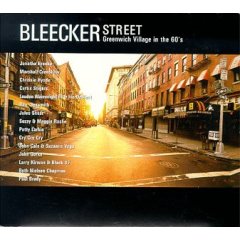 Various Artists
Various Artists
Bleecker Street: Greenwich Village In The 60’s
To a fan of folk and folk-rock music like me, this is a rare, and little-known, treasure. It came out a few years ago and I came across it at a Borders bookstore. It’s a compilation of ‘60s urban folk-era remade by contemporary singer-songwriters, and though some of the covers are reverential and dry, some are really fresh takes on these songs, all of which I’ve known for decades. My favorites include Jonatha Brookes’ crystalline, haunting take of Paul Simon’s haunting “Bleecker Street,†the tribute to the first folk era’s ground zero in Greenwich Village, from Simon and Garfunkel’s debut album. Another favorite is Loudon Wainwright III and Iris DeMent’s rollicking “Pack Up Your Sorrows,†which led me back to Richard and Mimi Farina’s greatest hits album, where the original still glows, and Cry Cry Cry’s beautiful version of Tom Paxton’s deeply moving “Last Thing on My Mind.†Droll baritone folkie John Gorka tackles Eric Andersen’s “Thirsty Boots,†John Cale and Suzanne Vega (!) wrap themselves around Leonard Cohen’s â€So Log Marianne†and Larry Kirwan of the NYC Irish rockers Black 47 revs up Phil Och’s still-relevant anti-war rant, “I Ain’t Marchin’ Anymore.†Yeah, I like everything on the disc, and I’ve turned many souls onto this disc.
Dave Mason
Certified Live
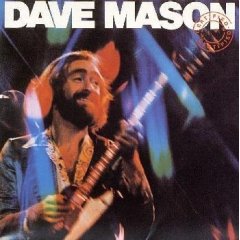 Mason’s album came out around the same time as “Frampton Comes Alive†and never got the acclaim and hype as his contemporary. But Mason, a reliable journeyman rocker from the Brit prog-rock and blues-rock tradition, was in many ways a more consistent songwriter and a guitarist with more of a personality than Frampton. “Comes Alive†may have been a cultural milestone of the ‘70s, but “Certified Live†is the better album for sheer listenability, and its toe-tapping music stands up better today. It’s a shame that it’s impossible to find in print other than as a Japanese import. Yes, it’s all soft rock, pop, folk-rock and lite-blues riffing, but it’s great, like that guilt-inducing scoop of ice cream you know you shouldn’t eat.
Mason’s album came out around the same time as “Frampton Comes Alive†and never got the acclaim and hype as his contemporary. But Mason, a reliable journeyman rocker from the Brit prog-rock and blues-rock tradition, was in many ways a more consistent songwriter and a guitarist with more of a personality than Frampton. “Comes Alive†may have been a cultural milestone of the ‘70s, but “Certified Live†is the better album for sheer listenability, and its toe-tapping music stands up better today. It’s a shame that it’s impossible to find in print other than as a Japanese import. Yes, it’s all soft rock, pop, folk-rock and lite-blues riffing, but it’s great, like that guilt-inducing scoop of ice cream you know you shouldn’t eat.
Paul Butterfield Blues Band
East-West
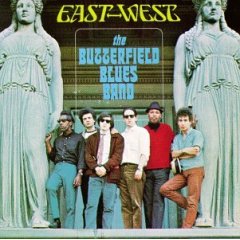 The Paul Butterfield Blues Band Butterfield isn’t remembered in pop terms as one of the top acts of the late ‘60s, but it was a pioneering mixed-race ensemble that helped usher in the blues revival. This album stands as a testament to musicianship of its members: Harpist and singer Paul Butterfield and guitarists Mike Bloomfield and Elvin Bishop, and its veteran blues scene rhythm section, Sam Lay on drums and Jerome Arnold on bass. This 1966 album was the band’s second, after a debut anchored in Chicago blues tradition. But East-West took a sharp left turn into the psychedelic era, with a Cannonball Adderly jazz cover and a title track that rambled for more than 13 minutes that wove in Eastern Indian raga music with ringing electric rock. Feed your head.
The Paul Butterfield Blues Band Butterfield isn’t remembered in pop terms as one of the top acts of the late ‘60s, but it was a pioneering mixed-race ensemble that helped usher in the blues revival. This album stands as a testament to musicianship of its members: Harpist and singer Paul Butterfield and guitarists Mike Bloomfield and Elvin Bishop, and its veteran blues scene rhythm section, Sam Lay on drums and Jerome Arnold on bass. This 1966 album was the band’s second, after a debut anchored in Chicago blues tradition. But East-West took a sharp left turn into the psychedelic era, with a Cannonball Adderly jazz cover and a title track that rambled for more than 13 minutes that wove in Eastern Indian raga music with ringing electric rock. Feed your head.
Rosanne Cash
The Full Sessions – Interiors
 A thoughtful, smart, resonant singer-songwriter, Cash has had her hit moments as a country(ish) star and daughter of Johnny Cash. But her less commercial efforts, like the 2006 tribute to her late father, “Back Cadillac,†and “Interiors,†a 1994 tribute to her shattered love life, stand as great concept albums chockfull of haunting, haunted songs. She’s one of the few songwriters who can write about deeply personal topics without getting bogged down in maudlin sentimentality or cheap emotions. Her emotional depth is instead expensive and hard-fought, painfully true. Don’t get me wrong, though – her music is not all mopey depressed dirges. She knows how to craft a hook and cast it deep into the listener’s psyche. Some of the songs from “Interiors†are so catchy you’ll swear you’ve heard them before.
A thoughtful, smart, resonant singer-songwriter, Cash has had her hit moments as a country(ish) star and daughter of Johnny Cash. But her less commercial efforts, like the 2006 tribute to her late father, “Back Cadillac,†and “Interiors,†a 1994 tribute to her shattered love life, stand as great concept albums chockfull of haunting, haunted songs. She’s one of the few songwriters who can write about deeply personal topics without getting bogged down in maudlin sentimentality or cheap emotions. Her emotional depth is instead expensive and hard-fought, painfully true. Don’t get me wrong, though – her music is not all mopey depressed dirges. She knows how to craft a hook and cast it deep into the listener’s psyche. Some of the songs from “Interiors†are so catchy you’ll swear you’ve heard them before.
Various Artists
Georgia to Galveston – America 1945-75
My friend Leland Rucker’s mix of historical news recordings and speeches, tied to music about those events. It starts with the death of FDR (and the birth of the baby boom generation) and ends with the end of the Vietnam War. You might be surprised by some of the audio-musical associations (Carl Sandberg’s “On Beatniks†matched to Donald Fagan’s “New Frontierâ€) or you may nod your head and let the associations wash over you (JFK’s assassination with The Byrds’ “He Was a Friend of Mine,†RFK’s assassination with Dion’s “Abraham, Martin and John,†a news report about Kent State with CSNY’s “Ohioâ€). (If you’re a John Stewart fan, be sure to read Leland’s series of terrific tributes to the late great songwriter).
Pat McLaughlin
Pat McLaughlin
McLaughlin is a little-known and under-rated singer-songwriter from Nahsville, whose 1988 self-titled first album caught the Colorado rockcrit contingent (or some of us, anyway) attention with its smooth blending of soul, country and folk-rock. It was like a Southern–fried version of Van Morrison’s music. His version of Aaron Neville’s soul chestnut “Wrong Number (I’m Sorry, Goodbye)†is a heartbreaker, and McLaughlin’s own “I’m in the Mood†is a rousing call to action.
Pat McLaughlin
Get Out And Stay Out
McLaughlin’s career got put on hold when his label, Capitol, decided it didn’t like his second LP. It was finally released in 1995 as his fourth official release, and it’s a pretty good record.
Pat McLaughlin
Unglued
The 1994 release from Capitol, still showed off McLaughlin’s whote soul chops, but didn’t click with the pop establishment. He also joined a short-lived band with members of the Subdudes called “Tiny Town†which released one album for Atlantic.
Various Artists
The Golden Age Of Underground Radio With Tom Donahue
A cool CD that’s a time capsule of rock, radio and culture from 1967. To Donahue was a former AM Top 40 DJ who, along with his child bride Raechel, invented FM progressive radio in San Francisco, first on KMPX and then on the legendary KSAN (which eventually got portrayed in cheesy fashion in both the movie “FM†and the TV series “WKRP in Cincinnati.†This disc is a re-created aircheck, with Donahue’s low-key ramblings, some hippie-era newscasts an commercials, and music of the era. Raechel produced the CD so it’s pretty authentic.
Matthew Sweet
Goodfriend-Another Take On Girlfriend-Legacy Ed.
A record-company bonus for rockcrits, this is a very cool collection of mostly alternate takes of songs from Sweet’s stellar “Girlfriend†CD (which I don’t own anymore), with the added attraction of way-out covers like Neil Young’s “Cortez the Killer.†Terrific guitar work and playing throughout – Sweet is an alt-rocker with his feet planted in pure pop – not surprising since the Oklahoma native was part of the poppy Athens, GA scene of the early ‘80s that coughed up R.E.M. I saw him with his band play live at the South By Southwest conference in Austin one year, and he rocked – like, really rocked, with the twin lead guitar work of Richard Lloyd from Television and Robert Quine from the Voidoids (and who toured with Lou Reed).. It was an awesome show, on a stage set up in the middle of a sidestreet off the fabled party avenue, Sixth Street in downtown Austin.
Various Artists
Hawaiian Slack Key Guitar Masters
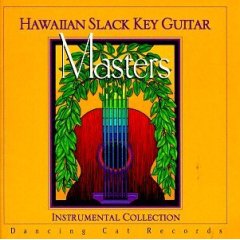 A mellow, lilting celebration of acoustic finger-picked guitar played in a distinctively lovely musical style that sounds soaked in island rhythms. Great Sunday morning music… or very late Saturday night.
A mellow, lilting celebration of acoustic finger-picked guitar played in a distinctively lovely musical style that sounds soaked in island rhythms. Great Sunday morning music… or very late Saturday night.
The Skeletons
In the Flesh!
The Skeletons are a Springfield, Missouri band of old fogies who play killer roots rock and ringing pop rock. In an earlier incarnation they were called the Morells, and they released one perfect, funny and rocking album, “Push and Shove,†in 1982. The released a followup in 2001 that I haven’t heard yet, and several CDs as the Skeletons. I’ve seen the Skeletons play a couple of times in Austin during SXSW, and the only other band I could possibly compare them to, for their sense of fun, their love of all of rock’s roots and branches, and their fabulous musicianship, is New England’s NRBQ. Favorite songs on this one: “Older Guys,†a fine ode to getting old, and “Trans Am,†one of the best car songs ever.
The Skeletons
Waiting
From the rousing, ringing opening anthem, “Downtown,†to the closing, gloomy and incredible “Waiting for the Gin to Hit Me,†his one’s just super cool.
Nanci Griffith
The Last of the True Believers
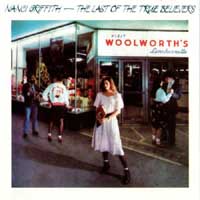 Texas-based singer-songwriter is a sweet l’il thang on stage, all shy and soft-voiced in between songs, turning on a lusty overdrive during songs. However, she’s something of a hellion backstage, cussing and ordering people around. It’s an amazing transformation, but one that still can’t upend the purity of her artistic persona. This is the last of her Rounder recordings that displayed her folkie-country beginnings; her next albums would be released under the MCA country label. I like this one best of all her records; it’s as if she’s poised on the verge of stardom (not that she became a superstar when she moved over to MCA) and she knows it, but she’s relaxed and loving where she is at the moment. Extra points for Lyle Lovett’s guest appearance on the album cover, and for the classic track “Love at the Five and Dime.â€
Texas-based singer-songwriter is a sweet l’il thang on stage, all shy and soft-voiced in between songs, turning on a lusty overdrive during songs. However, she’s something of a hellion backstage, cussing and ordering people around. It’s an amazing transformation, but one that still can’t upend the purity of her artistic persona. This is the last of her Rounder recordings that displayed her folkie-country beginnings; her next albums would be released under the MCA country label. I like this one best of all her records; it’s as if she’s poised on the verge of stardom (not that she became a superstar when she moved over to MCA) and she knows it, but she’s relaxed and loving where she is at the moment. Extra points for Lyle Lovett’s guest appearance on the album cover, and for the classic track “Love at the Five and Dime.â€
Big Head Todd & The Monsters
Live Monsters
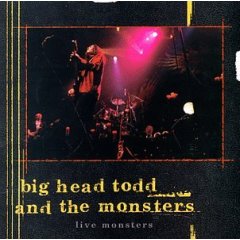 Colorado’s homegrown heroes have deserved better commercial success than they’ve achieved, but at the same time, listening to their entire library gets same-sounding after a while. Pull out the strongest tracks over their early career, though, and put them in context of their live performances, which are showcases for Todd Park Mohr’s soulful growls and limited but expressive guitar playing, bassist Rob Squares’ nimble, melodic lines and drummer Brian Nevin’s very musical timekeeping. The backup singing is by Denver blues queen Hazel Miller, and the adoration of the audience pushes the energy level past 10 on the dial.
Colorado’s homegrown heroes have deserved better commercial success than they’ve achieved, but at the same time, listening to their entire library gets same-sounding after a while. Pull out the strongest tracks over their early career, though, and put them in context of their live performances, which are showcases for Todd Park Mohr’s soulful growls and limited but expressive guitar playing, bassist Rob Squares’ nimble, melodic lines and drummer Brian Nevin’s very musical timekeeping. The backup singing is by Denver blues queen Hazel Miller, and the adoration of the audience pushes the energy level past 10 on the dial.
Shannon O’Connor
Low In Paradise
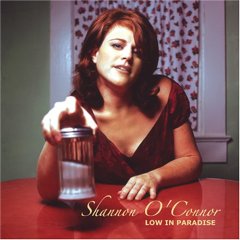 This is a favorite CD, and I marvel every damn time one of its songs pops up on the iPod. I received it a couple of years ago from a music publicist hired by O’Connor, a Chapel Hill-based singer-songwriter who has a quirky but likable voice that hooks you into her saucy, sassy vignettes. I should have written about it when it came out, but I’ve been out of the music game for a while, and it wouldn’t have made a difference. I don’t think it sold well nationally, but I bet she has a regional following and she deserves much bigger. She straddles rock, folk, bluegrass and country without affectation – whichever sound serves the song best is the sound that comes blasting out of the speakers. Great sogs: :Ride,†“Low,†“Cowboy Robot,†“Restless,†“Salty Dogâ€â€¦ aw, they’re all pretty good.
This is a favorite CD, and I marvel every damn time one of its songs pops up on the iPod. I received it a couple of years ago from a music publicist hired by O’Connor, a Chapel Hill-based singer-songwriter who has a quirky but likable voice that hooks you into her saucy, sassy vignettes. I should have written about it when it came out, but I’ve been out of the music game for a while, and it wouldn’t have made a difference. I don’t think it sold well nationally, but I bet she has a regional following and she deserves much bigger. She straddles rock, folk, bluegrass and country without affectation – whichever sound serves the song best is the sound that comes blasting out of the speakers. Great sogs: :Ride,†“Low,†“Cowboy Robot,†“Restless,†“Salty Dogâ€â€¦ aw, they’re all pretty good.
Joe Ely
Musta Notta Gotta Lotta
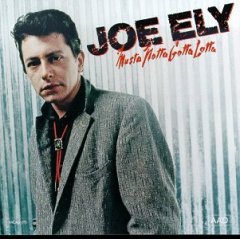 Ely’s a Texas institution, rocking out of Lubbock Texas in the Buddy Holly tradition, only soaked in Tejano and country music too. This was his third (fourth?) release back in 1981, about the time that he was the darling of the British punk rock scene, and opening shows for The Clash. His roots rock have really deep roots, and this one rocks from beginning to end, even the sow ones like “Dallas,†a song that captures the feel of flying into tow at night. We’ve seen this guy in various Texas joints, but my favorite was in the back patio of a Mexican diner in downtown Austin, in a superstar set with a slew of world-class Tejano, flamenco and country and rock musicians. To these guys, it was just good music, period, and the packed audience of music-biz hangers-on and rockcrits couldn’t agree more.
Ely’s a Texas institution, rocking out of Lubbock Texas in the Buddy Holly tradition, only soaked in Tejano and country music too. This was his third (fourth?) release back in 1981, about the time that he was the darling of the British punk rock scene, and opening shows for The Clash. His roots rock have really deep roots, and this one rocks from beginning to end, even the sow ones like “Dallas,†a song that captures the feel of flying into tow at night. We’ve seen this guy in various Texas joints, but my favorite was in the back patio of a Mexican diner in downtown Austin, in a superstar set with a slew of world-class Tejano, flamenco and country and rock musicians. To these guys, it was just good music, period, and the packed audience of music-biz hangers-on and rockcrits couldn’t agree more.
The Kinks
Muswell Hillbillies
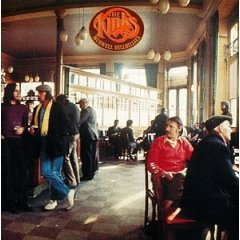 Great British band playing great American music from an earnest and resolutely British perspective. Ray Davies’ band had grown from a British Invasion pop group to sly, cynical observers of society and culture. This was Ray’s tribute to the Muswell Hill area of London, where he and brother Dave grew up, loving the sounds of American music as well as purely British traditions. “God damn have a cuppa tea,†indeed. A timeless and wonderfully rich album from the Kinks’ mid-career stretch, “Muswell Hillbillies” was critically applauded when it came out in 1971. It didn’t have a killer single like the previous LP’s “Lola,” but its best songs, like “20th Century Man,” “Complicated Life” and “Acute Schizophrenia Paranoia Blues” are among my favorite Kinks songs.
Great British band playing great American music from an earnest and resolutely British perspective. Ray Davies’ band had grown from a British Invasion pop group to sly, cynical observers of society and culture. This was Ray’s tribute to the Muswell Hill area of London, where he and brother Dave grew up, loving the sounds of American music as well as purely British traditions. “God damn have a cuppa tea,†indeed. A timeless and wonderfully rich album from the Kinks’ mid-career stretch, “Muswell Hillbillies” was critically applauded when it came out in 1971. It didn’t have a killer single like the previous LP’s “Lola,” but its best songs, like “20th Century Man,” “Complicated Life” and “Acute Schizophrenia Paranoia Blues” are among my favorite Kinks songs.
Donald Fagen
The Nightfly
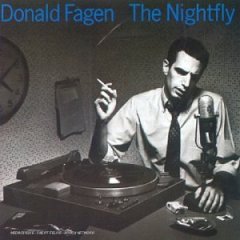 Steely Dan was cool and fun and great, and Donald Fagan was the cooler and funnier and possibly greater of the Dan partners. This is a great solo album that nostalgically captures the late ‘50s-early ‘60s American ethos, all urban and suburban and paranoid about the Russkies. The music’s cool, finger-popping post-bop pop, not at all of the era but somehow just perfect for the job. Fagan wrote a bunch of great songs for the album, including “The Nightfly,†“I.G.Y.†(1957-‘58 was the “International Geophysical Yearâ€), “Green Flower Street†and “New Frontier.†The best Steely Dan album that wasn’t a Steely Dan album.
Steely Dan was cool and fun and great, and Donald Fagan was the cooler and funnier and possibly greater of the Dan partners. This is a great solo album that nostalgically captures the late ‘50s-early ‘60s American ethos, all urban and suburban and paranoid about the Russkies. The music’s cool, finger-popping post-bop pop, not at all of the era but somehow just perfect for the job. Fagan wrote a bunch of great songs for the album, including “The Nightfly,†“I.G.Y.†(1957-‘58 was the “International Geophysical Yearâ€), “Green Flower Street†and “New Frontier.†The best Steely Dan album that wasn’t a Steely Dan album.
Tom Waits
Rain Dogs
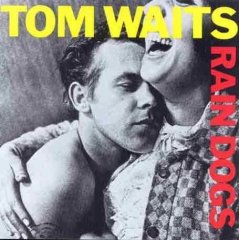 This was my #1 favorite album for about five years during the late ‘80s. Waits was at a creative peak here, growing beyond his early mumbling country-rock and entering into avant-garde theater territory. This one balances pop songwriting with his creepier, soon-to-be stranger instincts. And it has the superior version of “Downtown Train,†which was made into a tepid hit by Rod Stewart. I first saw Waits as the opening act for the Eagles in 1974, when the Eagles had just released “One of These Nights.” Waits’ “Ol’55” had been included on the Eagles’ previous album, “On the Border,” but the crowd at this summertime show was puzzled by the gruff-voiced beatnik who took the stage. In college, I fell in love with Waist’ double-album “Nighthawks at the Diner” recording, a live set that was like a mix of beatnik standup comedy and boozy post-bop jazz. I have to admit, I haven’t followed Waits’ career much in recent years, but I sure loved “Rain Dogs.”
This was my #1 favorite album for about five years during the late ‘80s. Waits was at a creative peak here, growing beyond his early mumbling country-rock and entering into avant-garde theater territory. This one balances pop songwriting with his creepier, soon-to-be stranger instincts. And it has the superior version of “Downtown Train,†which was made into a tepid hit by Rod Stewart. I first saw Waits as the opening act for the Eagles in 1974, when the Eagles had just released “One of These Nights.” Waits’ “Ol’55” had been included on the Eagles’ previous album, “On the Border,” but the crowd at this summertime show was puzzled by the gruff-voiced beatnik who took the stage. In college, I fell in love with Waist’ double-album “Nighthawks at the Diner” recording, a live set that was like a mix of beatnik standup comedy and boozy post-bop jazz. I have to admit, I haven’t followed Waits’ career much in recent years, but I sure loved “Rain Dogs.”
The Reivers
Saturday
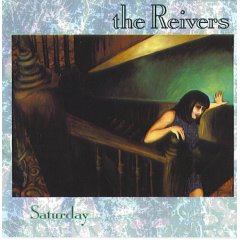 The Reivers were a great Austin band. I can remember the first time I saw them: during the first South By Southwest music industry conference, which opened with the Austin Music Awards at the Opera House. Here was a band the Colorado rockcrit mafia had never seen before but our friend David Menconi, who’d gone to UT and was still a Texan at heart, knew all about ‘em. The band was led by a gangly dude with a nasal voice who hunched over his telecaster, who wrote the songs and played lead guitar and sang. He was balanced by a woman who sang with a pure cutting tenor that seemed otherworldly in contrast to his croak. The bassist was a woman who bent over the frets and let her hair cover her face and dripped sweat from her nose onto her bass, and the drummer was a totally straight guy who kept time like a rock-solid sledgehammer (he later became manager for a Texas chain of family restaurants). The band was originally named Zeitgeist but had to give up the name because some dorky and pretentious classical group in Minnesota or some such place already used the name. They picked “The Reivers†after the Faulkner novel, which showed off leader John Croslin’s bookish nerdism (he worked in a bookstore, not surprisingly). The group released a handful of wonderful albums and toured the country during the ‘80s and ‘90s. We saw them in Denver (had a great dinner with them before the show), caught up with them in NYC at the New Music Seminar, playing CBGB, and of course in Austin at several more SXSW confabs. All their albums are worth hearing; this one’s best songs include “What Am I Doing,†“Electra,†“In Your Eyes,†“Secretariat†and “Ragamuffin Man.â€
The Reivers were a great Austin band. I can remember the first time I saw them: during the first South By Southwest music industry conference, which opened with the Austin Music Awards at the Opera House. Here was a band the Colorado rockcrit mafia had never seen before but our friend David Menconi, who’d gone to UT and was still a Texan at heart, knew all about ‘em. The band was led by a gangly dude with a nasal voice who hunched over his telecaster, who wrote the songs and played lead guitar and sang. He was balanced by a woman who sang with a pure cutting tenor that seemed otherworldly in contrast to his croak. The bassist was a woman who bent over the frets and let her hair cover her face and dripped sweat from her nose onto her bass, and the drummer was a totally straight guy who kept time like a rock-solid sledgehammer (he later became manager for a Texas chain of family restaurants). The band was originally named Zeitgeist but had to give up the name because some dorky and pretentious classical group in Minnesota or some such place already used the name. They picked “The Reivers†after the Faulkner novel, which showed off leader John Croslin’s bookish nerdism (he worked in a bookstore, not surprisingly). The group released a handful of wonderful albums and toured the country during the ‘80s and ‘90s. We saw them in Denver (had a great dinner with them before the show), caught up with them in NYC at the New Music Seminar, playing CBGB, and of course in Austin at several more SXSW confabs. All their albums are worth hearing; this one’s best songs include “What Am I Doing,†“Electra,†“In Your Eyes,†“Secretariat†and “Ragamuffin Man.â€
Walter Hyatt
Some Unfinished Business Vol. 1
A sad story: Hyatt, an early ‘70s troubadour who helped spark the hippie-country singer songwriter explosion out of both Nashville and Texas (along with the likes of Willie Nelson), Hyatt was a founder of “Uncle Walt’s Band,†and his partner Champ Hood has become one of the cornerstones of the Austin music scene. Hyatt never found superstardom, and he tragically died in the 1996 Valujet crash in Florida that killed all passengers and crew. But his wife worked on the studio recordings he had started, and more than 10 years later, it’s finally coming out. Good stuff, mature and thoughtful and musically rich.
The Subdudes
The Subdudes
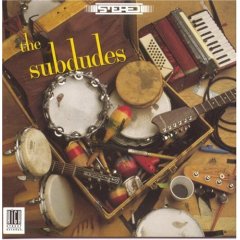 A Louisiana band of (mostly) childhood friends that got its name by playing its soulful, rocking roots rock acoustic, with no amplification, at weekly shows at a New Orleans club. The band up and moved to Colorado (the one member who wasn’t a childhood pal came from Fort Collins, north of Denver) to woodshed and finetune its sound, and ended up getting signed to Atlantic Records. This debut album is chockfull of songs that sound like R&B classic even though most of them were originals written by its members. And the album also showcases the band’s aural signature: instead of a drum kit, Steve Amedee pounded away in nightclubs and in the studio on a single tambourine.
A Louisiana band of (mostly) childhood friends that got its name by playing its soulful, rocking roots rock acoustic, with no amplification, at weekly shows at a New Orleans club. The band up and moved to Colorado (the one member who wasn’t a childhood pal came from Fort Collins, north of Denver) to woodshed and finetune its sound, and ended up getting signed to Atlantic Records. This debut album is chockfull of songs that sound like R&B classic even though most of them were originals written by its members. And the album also showcases the band’s aural signature: instead of a drum kit, Steve Amedee pounded away in nightclubs and in the studio on a single tambourine.
James Talley
Touchstones
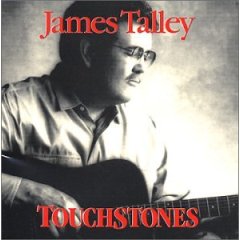 James Talley is a national treasure, a country-folk singer-songwriter who gained his biggest commercial acclaim during the late 1070s, when he was invited to play at Jimmy Carter’s White House. He was signed to Capitol Records then, and touted as the next big thing out of Nashville. He mixes folk, country, blues and rock together into a gentle, thoughtful sound that belies the fact that he stills lives in Nashville. He’s not slick ad all twangy and New Country. He’s a simple, straightforward storyteller at heart, like his fellow Okie Woody Guthrie. He’s got a dozen recordings available, starting with his 1975 debut, “Got No Bread, No Milk, No Money, but We Sure Got a Lot of Love†to 2004’s “Journey.†“Touchstones†is a collection of his best – and his favorite – songs from his entire career, re-recorded and updated.
James Talley is a national treasure, a country-folk singer-songwriter who gained his biggest commercial acclaim during the late 1070s, when he was invited to play at Jimmy Carter’s White House. He was signed to Capitol Records then, and touted as the next big thing out of Nashville. He mixes folk, country, blues and rock together into a gentle, thoughtful sound that belies the fact that he stills lives in Nashville. He’s not slick ad all twangy and New Country. He’s a simple, straightforward storyteller at heart, like his fellow Okie Woody Guthrie. He’s got a dozen recordings available, starting with his 1975 debut, “Got No Bread, No Milk, No Money, but We Sure Got a Lot of Love†to 2004’s “Journey.†“Touchstones†is a collection of his best – and his favorite – songs from his entire career, re-recorded and updated.
Le All Stars Orchestra
UltraVibe – Exotica Hawai’i
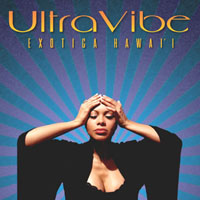 A bonus weirdo disc… this is one of a series of releases compiled by Honolulu producer and historian Bill Rose, a Hapa Japanese American who found a treasure trove of recordings by JA musicians in Hawaii during the 1940s and ‘50s. Most of his compilations feature big band and pop songs in both English and Japanese, sprinkled with a few Japanese folk songs. But this collection from the ‘50s spotlights instrumental versions of Japanese and American pop played in what w today call an “ultralounge†style – all cool and hep and futuristic for its time.
A bonus weirdo disc… this is one of a series of releases compiled by Honolulu producer and historian Bill Rose, a Hapa Japanese American who found a treasure trove of recordings by JA musicians in Hawaii during the 1940s and ‘50s. Most of his compilations feature big band and pop songs in both English and Japanese, sprinkled with a few Japanese folk songs. But this collection from the ‘50s spotlights instrumental versions of Japanese and American pop played in what w today call an “ultralounge†style – all cool and hep and futuristic for its time.
NRBQ
Uncommon Denominators
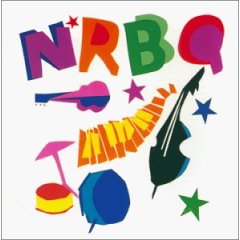 NRBQ is one of the best live bands I’ve ever seen. I was lucky enough to see them when I was a college student in New York during the ‘70s, and during the 1980s both in NY and in Denver during one of their infrequent tours outside of the Northeast. The New Rhythm and Blues Quintet started in the late ‘60s as a crazy-quilt collage of kids playing rock, bebop, TV theme songs, R&B and country music. They played everything super-well, but with lots of irreverent humor, so on this very satisfying compilation of their greatest non-hits, you get songs like “Wacky Tobacky†(about you-know-what), “Captain Lou†(about their manager, a professional wrestler) and “It Was a Accident†(about getting a woman pregnant). But you also get killer power pop like “Me and the Boys†(made more famous by Bonnie Raitt) and the keening “Ridin’ in My Car,†as well as a very early R&B romp classic, “RC Cola and a Moon Pie.†The recordings are great, but I’ll never forget the live performances, when guitarist Al Anderson would catch fire, or when the band would play an entire song completely out of tune, only to come together on the last note (the “Bonanza†theme song, which is captured on one of their studio albums), or when pianist Terry Adams, the insane bandleader and musical mischief-maker, would start pounding on the keys with his forearms or sneakers, taking and old Jerry Lee Lewis trick to the nth degree.
NRBQ is one of the best live bands I’ve ever seen. I was lucky enough to see them when I was a college student in New York during the ‘70s, and during the 1980s both in NY and in Denver during one of their infrequent tours outside of the Northeast. The New Rhythm and Blues Quintet started in the late ‘60s as a crazy-quilt collage of kids playing rock, bebop, TV theme songs, R&B and country music. They played everything super-well, but with lots of irreverent humor, so on this very satisfying compilation of their greatest non-hits, you get songs like “Wacky Tobacky†(about you-know-what), “Captain Lou†(about their manager, a professional wrestler) and “It Was a Accident†(about getting a woman pregnant). But you also get killer power pop like “Me and the Boys†(made more famous by Bonnie Raitt) and the keening “Ridin’ in My Car,†as well as a very early R&B romp classic, “RC Cola and a Moon Pie.†The recordings are great, but I’ll never forget the live performances, when guitarist Al Anderson would catch fire, or when the band would play an entire song completely out of tune, only to come together on the last note (the “Bonanza†theme song, which is captured on one of their studio albums), or when pianist Terry Adams, the insane bandleader and musical mischief-maker, would start pounding on the keys with his forearms or sneakers, taking and old Jerry Lee Lewis trick to the nth degree.
Gram Parson, Byrds, Flying Burrito Bros., various
Warm Evenings, Pale Mornings, Bottled Blues 1963-1973
Gram 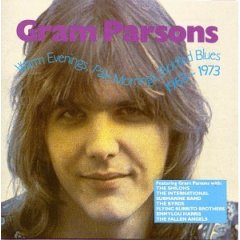 Parsons died young, but he’s cast a long shadow on every rocker who plays with a hint of country, or every country player, period. Sure, rock musicians like Chris Hillman and the other Byrds were looking to Nashville for inspiration before Parsons joined the band, and a whole generation of rockers were ready to add pedal steel and twang to their tunes. But he catalyzed the movement and gave it a voice. By the late ‘60s, urban blues and progressive rock were devolving to the back-to-the-Earth country-hippie roots movement. Though ultimately Parson was a minor figure as far as the public knew, he was and remains a giant to musicians, because the arc of his brief comet’s flight touched some of the most influential groups and performers of his day, from the Byrds and the Flying Burrito Brothers and to his discovery of Emmylou Harris, a true gift to the world. This collection isn’t the most comprehensive or the most official, but I like it because it includes in one package, tracks from his earliest, pre-Byrds material, all the way to his solo masterpieces including one of my all-time favorite songs, “Return of the Grevious Angel,†with Emmylou’s pure voice countering his loopy, lovable quaver.
Parsons died young, but he’s cast a long shadow on every rocker who plays with a hint of country, or every country player, period. Sure, rock musicians like Chris Hillman and the other Byrds were looking to Nashville for inspiration before Parsons joined the band, and a whole generation of rockers were ready to add pedal steel and twang to their tunes. But he catalyzed the movement and gave it a voice. By the late ‘60s, urban blues and progressive rock were devolving to the back-to-the-Earth country-hippie roots movement. Though ultimately Parson was a minor figure as far as the public knew, he was and remains a giant to musicians, because the arc of his brief comet’s flight touched some of the most influential groups and performers of his day, from the Byrds and the Flying Burrito Brothers and to his discovery of Emmylou Harris, a true gift to the world. This collection isn’t the most comprehensive or the most official, but I like it because it includes in one package, tracks from his earliest, pre-Byrds material, all the way to his solo masterpieces including one of my all-time favorite songs, “Return of the Grevious Angel,†with Emmylou’s pure voice countering his loopy, lovable quaver.
Willis Alan Ramsey
Willis Alan Ramsey
This Texas legend of a songwriter wrote what he half-jokingly says, and what many music fans and critics agree, is the perfect album. Recorded as a young man for Leon Russell’s Shelter label in 1972, the album is a time capsule of the Texas music scene. It had one hit song, though it was made a hit by others (America and then Captain and Tenille turned his nasty “Muskrat Candlelight†into the cutesy “Muskrat Love.†The rest of the songs are part and parcel of the Americana canon: “Satin Sheets,†“Northeast Texas Women,†Spider John†– all delivered with a sly swagger and the supreme confidence of youth. Ramsey has never released another album, although there are recordings floating around. He doesn’t really have to.










